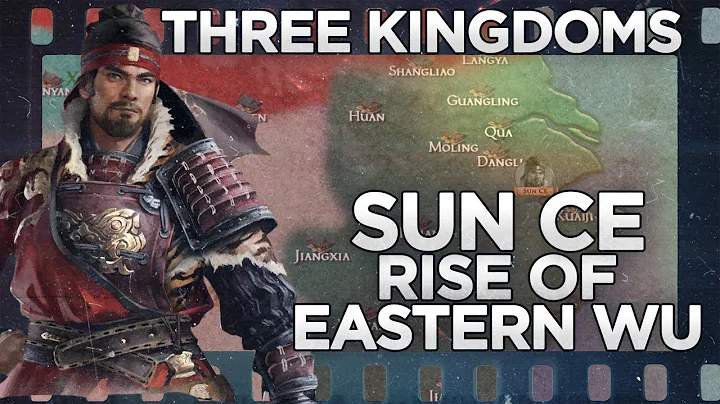Victory and defeated soldiers have unexpected family affairs, and Bao is a man with shame and shame; Jiangdong’s children are talented and come back unknown. ——《题乌江亭》
In the field of ancient Chinese literature and history, Jiangdong is a very frequent occurrence. In many poems and historical events, the geographical term “Jiangdong” will be found. Then, Jiangdong in history , Where is it located today?
The origin of Jiangdong
In the pre-Qin era, Jianghehe. Belongs to the category of proper nouns. In the pre-Qin era, "Jiang" often specifically referred to the Yangtze River. Other rivers are often described as "water", such as "Yishui", "Hanshui" and so on. Even in the "Shui Jing Zhu" that was written during the Southern and Northern Dynasties, there was a record of using "Jiang Shui" to specifically describe the Yangtze River.

The Yangtze River flows through the vicinity of Jiujiang, Jiangxi, and there will be significant changes in the direction. Therefore, the Chinese ancestors used this section of the Yangtze River as a coordinate to establish the concept of Jiangdong and Jiangxi-but Jiangxi in ancient times and Jiangxi Province today are not the same concept. And, because of the different dynasties, the scope of Jiangdong also changed, but in general, the Yangtze River was used as a reference.
Wu’s Jiangdong
In the Three Kingdoms period, the basic plate of the Wu state was Jiangdong at that time. The famous Meizhou Lang was also the governor of Jiangdong under the Sun Quan regime. At that time there were so-called Jiangdong six counties.
The so-called Jiangdong six counties refer to the six counties of Kuaiji, Danyang, Luling, Yuzhang, Wu and Lujiang at that time.
Among the six counties, the oldest is Kuaiji County. It is said that Emperor Yu, the ancestor of the Xia Dynasty, was buried in Kuaiji and left a lot of footprints. In addition, during the Eastern Zhou Dynasty, the Wu and Yue princes fought for hegemony. Kuaiji is also an important historical coordinate.
The six counties in Jiangdong at that time roughly included most of today's Zhejiang province, as well as southern Jiangsu and Anhui provinces, as well as parts of Jiangxi province.
Wu Kingdom has only existed for decades before being annexed by the Western Jin Dynasty. However, Jiangdong's scope has a rough scope in this era. After dynasties, almost all of them used this as a blueprint to divide Jiangdong's scope.
江东 of the Tang Dynasty
During the reign of Emperor Xuanzong of the Tang Dynasty, the Jiangdong region was divided into the concept of "Nineteen states in Jiangdong". In the Tang Dynasty, the geographical scope of Jiangdong was expanded in comparison with that of Wu State. This reflects to a certain extent that the territory of the Tang Dynasty in the Xuanzong era was huge. Therefore, in terms of local governance, the scope of supervision in Jiangdong was expanded, thereby reducing the management of the court. pressure.

Jiangdong in the Tang Dynasty basically encompasses the scope of Wu Guo Jiangdong. At the same time, on the basis of Wu Guo Jiangdong's scope, the entire Fujian Province today is included The range of Jiangdong.
With the advent of the Five Dynasties and Ten Kingdoms, the Jiangdong region of the Tang Dynasty was divided up successively by multiple regimes such as Min, Qianmiao’s Wu Yue, and Yang Xingmi’s Wu (later Nantang).
Jiangdong in the Song Dynasty and beyond
After the Northern Song Dynasty unified China partially, the Jiangnan East Road was established in the Jiangdong area.
Jiangdong in the Song Dynasty has a significant narrowing scope compared to the Tang Dynasty: Jiangdong in the Song Dynasty only includes the southern regions of Jiangsu and Anhui provinces today, and its scope is even narrower than the Jiangdong in the Wu period. .

For the dynasties after the Song Dynasty, in terms of geographical division, there was no official Jiangdong concept division. However, in the Qing Dynasty, it was customary to think that the scope of Jiangdong included today's Anhui, southern Jiangsu, Zhejiang and northwestern Jiangxi. The scope of Jiangdong in the Qing Dynasty was not as large as the Tang Dynasty, nor was it as small as the Song Dynasty. In general, it still continued the framework of Jiangdong in the Wu Dynasty. This geographical concept continues to this day.





















